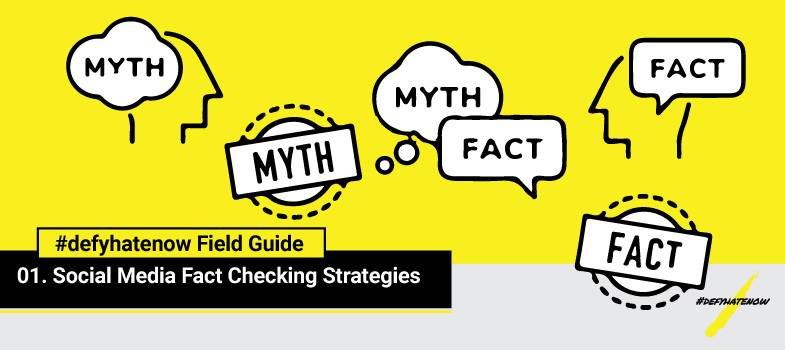The 'Human Algorithm' Approach
The 'human algorithm' approach to verification
Mark
Little from Storyful talks about the value of the “human
algorithm”—applying people to the problem. “Every news event in the age
of social media creates more than a conversation, it creates a
community. When news breaks, a self-selecting network gathers to talk
about the story. Some are witnesses - the creators of original content -
others are amplifiers - passing that content on to a wider audience.
And in every group are the filters, the people who everyone else looks
to for judgement.” Columbia Journalism Review: Best Practices for Social Media Verification by Craig Silverman
Here are his tips for verifying user-generated video:
- Review of the uploader’s history and location to see whether he/she has shared useful and credible content in the past, or if he/she is a “scraper”, passing other people’s content off a their own (eg. don’t trust uploaders in Japan to post video from Syria).
- Use of Google street view/maps/satellite imagery to help verify the locations in a video.
- Consultation of other news sources or validated user content to confirm events in a video happened as they were described.
- Examination of key features in a video such as weather and background landscape to see if they match known facts on the ground.
- Translation of every word that comes with a video for additional context.
- Monitoring social media traffic to see who is sharing the content and what questions are being asked about it.
- Develop and maintain relationships with people within the community around the story.
Andy Carvin, NPR’s senior strategist engages in real-time verification and curation to track events in the Middle East. There are valuable lessons for journalists in the way he has cultivated sources on Twitter and elsewhere and transformed his Twitter account into an invaluable newswire.
One of the biggest verification lessons from Carvin relates to the human algorithm idea put forward by Little. Carvin interacts directly with sources via Skype and e-mail and other means to gather information. He does a lot of old school verification and talking to sources, which cannot be underestimated. He also practices a form of crowdsourced verification. If he sees a tweet that reports something of a newsworthy nature, he will often quote that tweet and add a request for his followers to help him verify if it’s correct.
As much as there are tools and techniques that can be used for verification of social media content, conversation and interaction are in many cases the best ways to move towards verification. Get in touch. Ask questions. Interact. Learn about the source as well as the information. Tips & guidelines:
Independent verification: “In the case of what we did for the so-called Israeli weapons, I had a lot of people that were giving me essentially the same information and they didn’t really know each other,” said Carvin.
Beware of non-journalists using news terms: “Some of the rumours I see floating around seem to be accompanied by the words ‘breaking’ or ‘confirmed’ or ‘urgent’ all in capital letters,” he said. “I think it’s partially because you’ve got people on the ground hearing information and they’ve very excited about getting it, or feel like it needs to be out there as quickly as possible. They start using phrases that reporters use but they are using them in a very different way.” When Carvin sees people doing this on Twitter he will often reply to ask for additional details, or for them to provide a photo or video to help with confirmation.
Test and learn about your network: Over time he has been able to determine which of his sources and followers have different skills. This is possible because he is constantly asking them to help him with translation, to identify objects or a location in a photo, to share details from on the ground etc. The more he asks and tests his network, the more he sees where they individually and collectively can be of help. It takes time and dedication to do this, but the payoff, at least in terms of what he is doing, is obvious. “I engage with them as best as possible and try to get a sense if they know what they’re talking about,” Carvin said. “For example, it becomes pretty clear who actually speaks Arabic and who is using Google Translate. So when people are trying to help me I can tell who is giving me the more nuanced translations they can say, ‘Oh, that’s not a Libyan accent, it’s a Cairo accent’ and then have other people concur with that.”
Tips from Ushahidi - you can see how the people a person does know can also be an effective tool for verifying information.
Network: Who does this person follow and who follows them? These factors can help determine if they have authority on the topic or location in question. Are they trusted by people that you and others trust? Who is retweeting them and who are they retweeting?
Content: Are they offering specific details that indicate they’re seeing something with their own eyes? Have they shared photos or video to corroborate their information? Can you work to independently verify what they’re tweeting? Do they usually tweet about this kind of event/topic?
Contact: It’s obvious but bears repeating: send a direct message or reply and start talking to the person to see if they can provide additional details about the information they’re sharing. Ask them to shoot a picture or video. Ask them who they are, where they are etc.
Source: Columbia Journalism Review
Best Practices for Social Media Verification Some tips and thoughts from the experts
by Craig Silverman 2011
